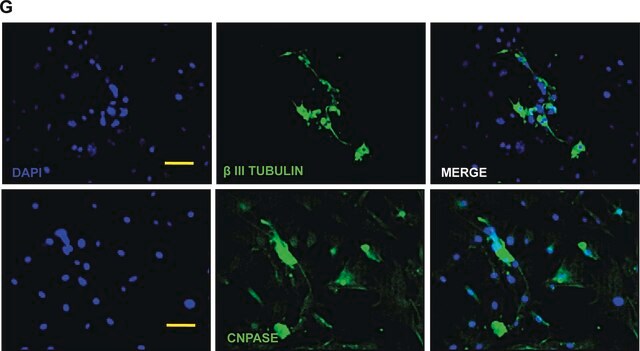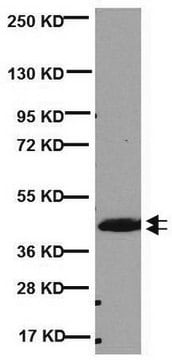C5922
Monoclonal Anti-CNPase antibody produced in mouse
clone 11-5B, ascites fluid
Sinónimos:
Anti-CNP1, Anti-HLD20
About This Item
Productos recomendados
origen biológico
mouse
Nivel de calidad
conjugado
unconjugated
forma del anticuerpo
ascites fluid
tipo de anticuerpo
primary antibodies
clon
11-5B, monoclonal
contiene
15 mM sodium azide
reactividad de especies
mouse, rat, bovine, canine, pig, human, rabbit, sheep
no debe reaccionar con
guinea pig, chicken
técnicas
immunohistochemistry: suitable using brain sections
indirect ELISA: suitable
microarray: suitable
western blot: 1:500 using fresh bovine brain extract
isotipo
IgG1
Nº de acceso UniProt
Condiciones de envío
dry ice
temp. de almacenamiento
−20°C
modificación del objetivo postraduccional
unmodified
Información sobre el gen
human ... CNP(1267)
mouse ... Cnp(12799)
rat ... Cnp(25275)
Categorías relacionadas
Descripción general
The enzyme isolated from mammalian brain is primarily a mixed dimer of approximately 94 kDa. The dimer consists of a varied proportion of CNP1 (46 kDa) and CNP2 (48 kDa) subunits in various species. The high levels of CNPase observed in oligodendrocytes and Schwann cells portend a vital role of this enzyme in the normal function of these cells. They are distinguished from nearly all other cells by their ability to synthesize and maintain vast amounts of multilamellar membrane, known as myelin. It seems very likely that CNPase is expressed at high levels in these particular cells to facilitate the elaboration and maintenance of myelin or to carry out functions imposed or afforded by the unique membrane structure of myelin. Since the enzyme is a myelin-associated enzyme, it is of considerable interest in the study of diseases and disorders in which myelin is affected, such as multiple sclerosis, subacute sclerosing panencephalitis, acquired immunodefi ciency with CNS involvement, peripheral neuropathies, etc. Another important use is the study of reinnervation of the neuromuscular junction and the identification of oligodendrocyte progenitor cells, very early in postnatal development.
Especificidad
Inmunógeno
Aplicación
Cláusula de descargo de responsabilidad
Not finding the right product?
Try our Herramienta de selección de productos.
Opcional
Código de clase de almacenamiento
11 - Combustible Solids
Clase de riesgo para el agua (WGK)
WGK 1
Certificados de análisis (COA)
Busque Certificados de análisis (COA) introduciendo el número de lote del producto. Los números de lote se encuentran en la etiqueta del producto después de las palabras «Lot» o «Batch»
¿Ya tiene este producto?
Encuentre la documentación para los productos que ha comprado recientemente en la Biblioteca de documentos.
Nuestro equipo de científicos tiene experiencia en todas las áreas de investigación: Ciencias de la vida, Ciencia de los materiales, Síntesis química, Cromatografía, Analítica y muchas otras.
Póngase en contacto con el Servicio técnico








